Zhifeng Hu
Graph Neural Network Aided Deep Reinforcement Learning for Resource Allocation in Dynamic Terahertz UAV Networks
May 08, 2025Abstract:Terahertz (THz) unmanned aerial vehicle (UAV) networks with flexible topologies and ultra-high data rates are expected to empower numerous applications in security surveillance, disaster response, and environmental monitoring, among others. However, the dynamic topologies hinder the efficient long-term joint power and antenna array resource allocation for THz links among UAVs. Furthermore, the continuous nature of power and the discrete nature of antennas cause this joint resource allocation problem to be a mixed-integer nonlinear programming (MINLP) problem with non-convexity and NP-hardness. Inspired by recent rapid advancements in deep reinforcement learning (DRL), a graph neural network (GNN) aided DRL algorithm for resource allocation in the dynamic THz UAV network with an emphasis on self-node features (GLOVE) is proposed in this paper, with the aim of resource efficiency (RE) maximization. When training the allocation policy for each UAV, GLOVE learns the relationship between this UAV and its neighboring UAVs via GNN, while also emphasizing the important self-node features of this UAV. In addition, a multi-task structure is leveraged by GLOVE to cooperatively train resource allocation decisions for the power and sub-arrays of all UAVs. Experimental results illustrate that GLOVE outperforms benchmark schemes in terms of the highest RE and the lowest latency. Moreover, unlike the benchmark methods with severe packet loss, GLOVE maintains zero packet loss during the entire training process, demonstrating its better robustness under the highly dynamic THz UAV network.
Tera-SpaceCom: GNN-based Deep Reinforcement Learning for Joint Resource Allocation and Task Offloading in TeraHertz Band Space Networks
Sep 12, 2024



Abstract:Terahertz (THz) space communications (Tera-SpaceCom) is envisioned as a promising technology to enable various space science and communication applications. Mainly, the realm of Tera-SpaceCom consists of THz sensing for space exploration, data centers in space providing cloud services for space exploration tasks, and a low earth orbit (LEO) mega-constellation relaying these tasks to ground stations (GSs) or data centers via THz links. Moreover, to reduce the computational burden on data centers as well as resource consumption and latency in the relaying process, the LEO mega-constellation provides satellite edge computing (SEC) services to directly compute space exploration tasks without relaying these tasks to data centers. The LEO satellites that receive space exploration tasks offload (i.e., distribute) partial tasks to their neighboring LEO satellites, to further reduce their computational burden. However, efficient joint communication resource allocation and computing task offloading for the Tera-SpaceCom SEC network is an NP-hard mixed-integer nonlinear programming problem (MINLP), due to the discrete nature of space exploration tasks and sub-arrays as well as the continuous nature of transmit power. To tackle this challenge, a graph neural network (GNN)-deep reinforcement learning (DRL)-based joint resource allocation and task offloading (GRANT) algorithm is proposed with the target of long-term resource efficiency (RE). Particularly, GNNs learn relationships among different satellites from their connectivity information. Furthermore, multi-agent and multi-task mechanisms cooperatively train task offloading and resource allocation. Compared with benchmark solutions, GRANT not only achieves the highest RE with relatively low latency, but realizes the fewest trainable parameters and the shortest running time.
Deep Reinforcement Learning Based Cross-Layer Design in Terahertz Mesh Backhaul Networks
Oct 08, 2023Abstract:Supporting ultra-high data rates and flexible reconfigurability, Terahertz (THz) mesh networks are attractive for next-generation wireless backhaul systems that empower the integrated access and backhaul (IAB). In THz mesh backhaul networks, the efficient cross-layer routing and long-term resource allocation is yet an open problem due to dynamic traffic demands as well as possible link failures caused by the high directivity and high non-line-of-sight (NLoS) path loss of THz spectrum. In addition, unpredictable data traffic and the mixed integer programming property with the NP-hard nature further challenge the effective routing and long-term resource allocation design. In this paper, a deep reinforcement learning (DRL) based cross-layer design in THz mesh backhaul networks (DEFLECT) is proposed, by considering dynamic traffic demands and possible sudden link failures. In DEFLECT, a heuristic routing metric is first devised to facilitate resource efficiency (RE) enhancement regarding energy and sub-array usages. Furthermore, a DRL based resource allocation algorithm is developed to realize long-term RE maximization and fast recovery from broken links. Specifically in the DRL method, the exploited multi-task structure cooperatively benefits joint power and sub-array allocation. Additionally, the leveraged hierarchical architecture realizes tailored resource allocation for each base station and learned knowledge transfer for fast recovery. Simulation results show that DEFLECT routing consumes less resource, compared to the minimal hop-count metric. Moreover, unlike conventional DRL methods causing packet loss and second-level latency, DEFLECT DRL realizes the long-term RE maximization with no packet loss and millisecond-level latency, and recovers resource-efficient backhaul from broken links within 1s.
TeraHertz Band Communication: An Old Problem Revisited and Research Directions for the Next Decade
Dec 25, 2021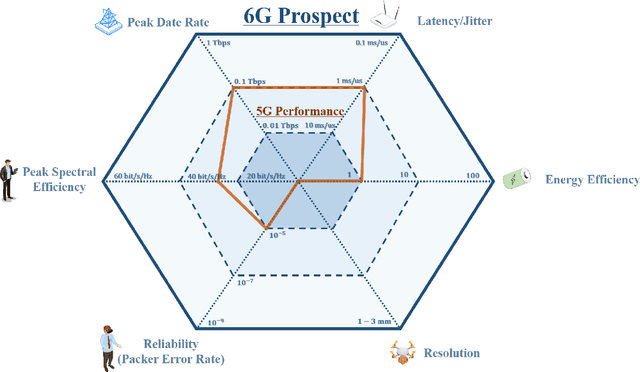
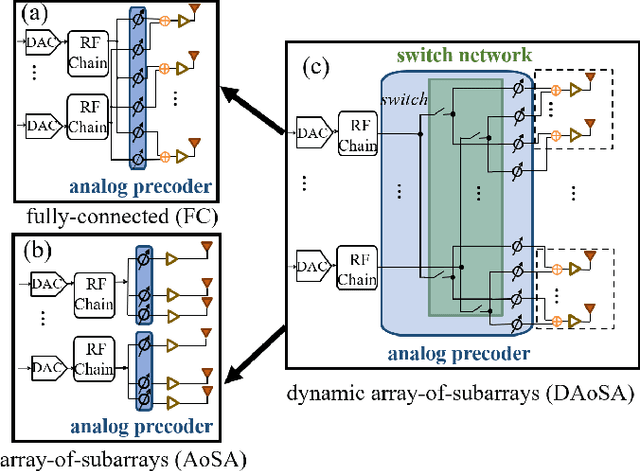
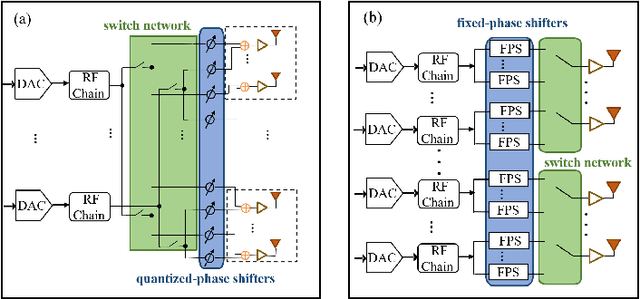
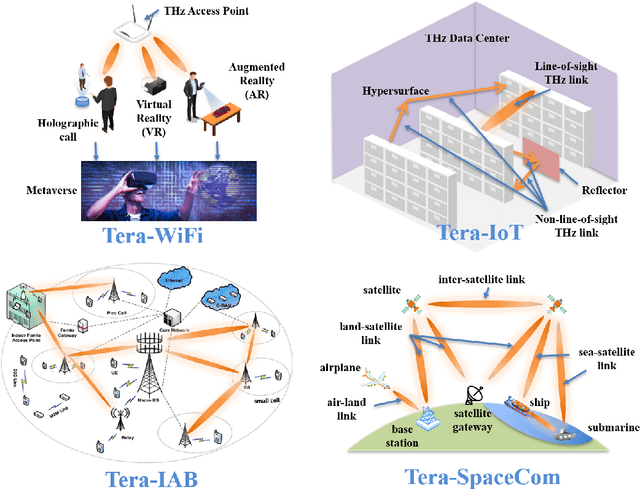
Abstract:TeraHertz (THz) band communications are envisioned as a key technology for 6G and Beyond. As a fundamental wireless infrastructure, THz communication can boost abundant promising applications. In 2014, our team published two comprehensive roadmaps for the development and progress of THz communication networks [1], [2], which helped the research community to start research on this subject afterwards. In particular, this topic became very important and appealing to the research community due to 6G wireless systems design and development in recent years. Many papers are getting published covering different aspects of wireless systems using the THz band. With this paper, our aim is looking back to the last decade and revisiting the old problems and pointing out what has been achieved in the research community so far. Furthermore, in this paper still to be investigated new research challenges for the THz band communication systems are presented by covering diverse subtopics such as from perspectives of devices, channel behavior, communication and networking problems, physical testbeds and demonstration systems. The key aspects presented in this paper will enable THz communications as a pillar of 6G and Beyond wireless systems in the next decade.
Obfuscation for Privacy-preserving Syntactic Parsing
Apr 21, 2019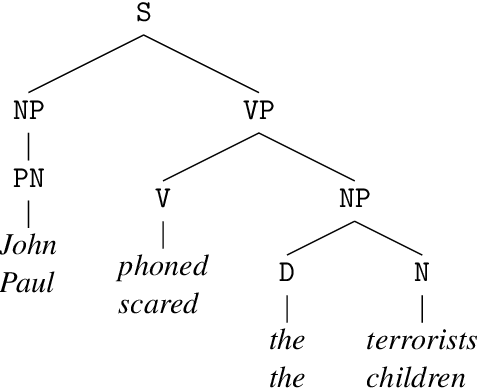
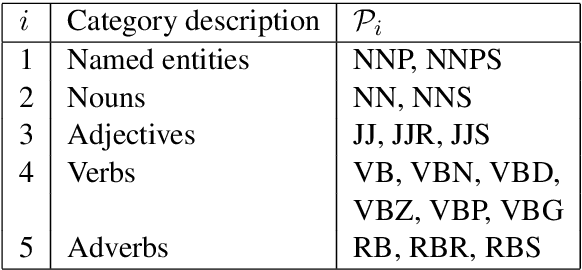
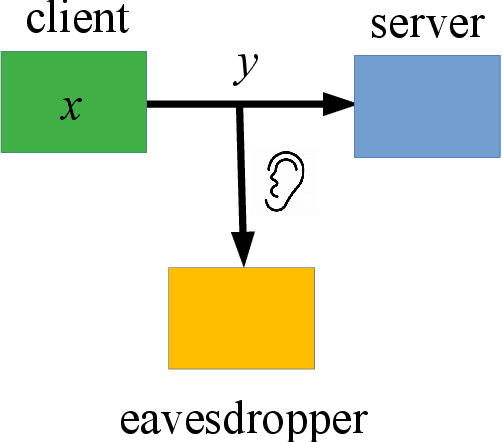
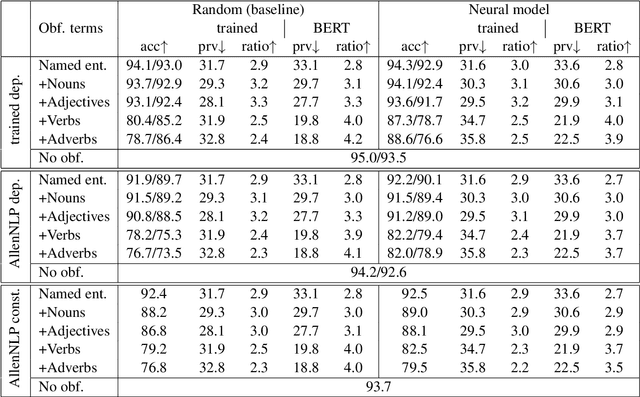
Abstract:The goal of homomorphic encryption is to encrypt data such that another party can operate on it without being explicitly exposed to the content of the original data. We introduce an idea for a privacy-preserving transformation on natural language data, inspired by homomorphic encryption. Our primary tool is {\em obfuscation}, relying on the properties of natural language. Specifically, a given text is obfuscated using a neural model that aims to preserve the syntactic relationships of the original sentence so that the obfuscated sentence can be parsed instead of the original one. The model works at the word level, and learns to obfuscate each word separately by changing it into a new word that has a similar syntactic role. The text encrypted by our model leads to better performance on three syntactic parsers (two dependency and one constituency parsers) in comparison to a strong random baseline. The substituted words have similar syntactic properties, but different semantic content, compared to the original words.
 Add to Chrome
Add to Chrome Add to Firefox
Add to Firefox Add to Edge
Add to Edge